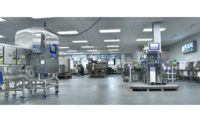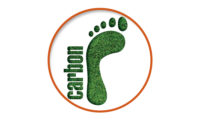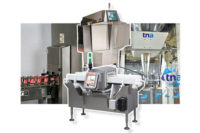Machinery Technology: Inspection / detection
Test, Measure, Detect
Inspection / detection equipment gets down to the nitty gritty with single machines and innovative combo machines.








I was fortunate enough to attend PACK EXPO Las Vegas last month to see many of these machines that are new to market. From combination X-ray and checkweigher systems, to metal detectors and vision systems, the takeaway was – of course – flexibility and high speed action.
Let’s start with the checkweigher. This measurement system can be combined with metal detectors or X-ray systems, which can be nice if you need product weighed with accuracy – critical to manufacturers of both dry and non-dry goods. Checkweighers confirm weights quickly, at line speeds, and automatically identify off-weights for rejection and rework.
One of the newest on scene is Mettler Toledo’s (mt.com/highspeed) C-Series, which comprises three main product lines. The turnkey C31 StandardLine has been designed specifically for products weighing up to 6 kg, with a throughput rate of 200 units per minute. It can be combined with metal detection technology to provide checkweighing and foreign body detection in one compact system. It also offers a number of optional features, including a water-protected construction, and stable guide rails for consistent product flow, with minimal downtime.
The C33 PlusLine weighs packages between 7 g and 7.5 kg, at throughput rates of up to 300 units per minute. It offers features including specially protected conveyors for the weighing of granular or powdery products. Last but not least, the C35 AdvancedLine covers a weighing range from 3 g to 10 kg, and measures up to 600 packages per minute. The system can be customized with a wide range of rejection, transport and conveyor belt options. Integrated with a Safeline metal detector, the C35 provides an efficient and space-saving combination system. C-Series offers a variety of HMI locations and machine configurations that allow positioning the checkweigher to best fit specific operational needs.
Another checkweigher just out is from Spee-Dee Packaging Machinery (spee-dee.com). The bonus with this one is there is no bulky electrical cabinet. The space-saving design allows for the electrical components and cables to be stored inside the frame rails, reducing the footprint. The checkweigher can be integrated into both existing filling systems and other machinery. The system comes with improved accuracy, thanks to its use of MFR Technology within the load cell. Providing a higher level of accuracy than strain gauge loadcells, MFR Technology is said to give better performance with no reading drift.
Other features include tool-less belt removal and a three-leg base, which makes it easier than four legs to level. Being PLC-based means there’s no proprietary controls to worry about, making the checkweigher more user-friendly to operate and calibrate in the field.
As a fully automated on-line or stand-alone measurement system, CMC-Kuhnke’s (cmc-kuhnke.com) AUTO-XTS was specifically designed to provide non-destructive complete double-seam inspection for beverage fillers. The AUTO-XTS combines the internal X-ray seam measurements of the SEAMscan XTS with the Combination SEAM Gauge for external measurements into one robust unit, providing faster inspection results and reduced labor costs. The AUTO-XTS does a 360° scan of the seam, identifies potential wrinkles and calculates the percentage tightness.
When connected directly to the production line, cans are automatically delivered to the AUTO-XTS in-feed conveyor. Cans may then be held for additional testing or sent back into production. Alternatively, beverage cans may be manually placed onto the same conveyor in order by head number. XTS virtual seam teardown technology provides highly accurate double seam inspection data, while dramatically reducing can seam inspection costs.
The X5C X-ray and CW3 Combo inspection system from Loma Systems (loma.com) is capable of weighing products while simultaneously inspecting for foreign bodies, all in one integrated system. The integrated ‘detect and weigh’ technologies ensure food safety for brand protection and consistency in weight, size and shape. At just 2.5 meters long, it can be easily integrated where production space is limited. The unit is stainless steel and offers an IP66 washdown design. Capable of running at speeds up to 150 packs per minute, it is operated using two independent control panels and has separate reject bins for out-of-weight and contaminated products.
The fast and accurate CW3 series checkweigher can cope with a wide variety of flexible and rigid packs over a broad range of weight. The CW3 has many options to meet all application needs, such as reject confirmation, bin full sensors and infeed guides.
Inspection / detection systems offer a variety of benefits. Find out which type will suit your needs best – now and in the future. Make sure to read the preceding sidebar to see what challenges customers may face and how to jump over the hurdles.
|
Mettler-Toledo shared some insight on what’s new, why a combo system may be a good fit and how to get over the challenges you may face when purchasing I/D machinery. Packaging Strategies: Last year we saw metal detection moving to X-ray systems, what is new this year in inspection/detection? MT: There are two primary trends this year and going forward: PS: What is the added bonus of a checkweigher to an inspection system? MT: Perhaps the biggest challenge is to find the inspection system that fits the company’s immediate needs, but is adaptable to future needs as the company grows and introduces new product lines or larger versions of existing products. |
Looking for a reprint of this article?
From high-res PDFs to custom plaques, order your copy today!











